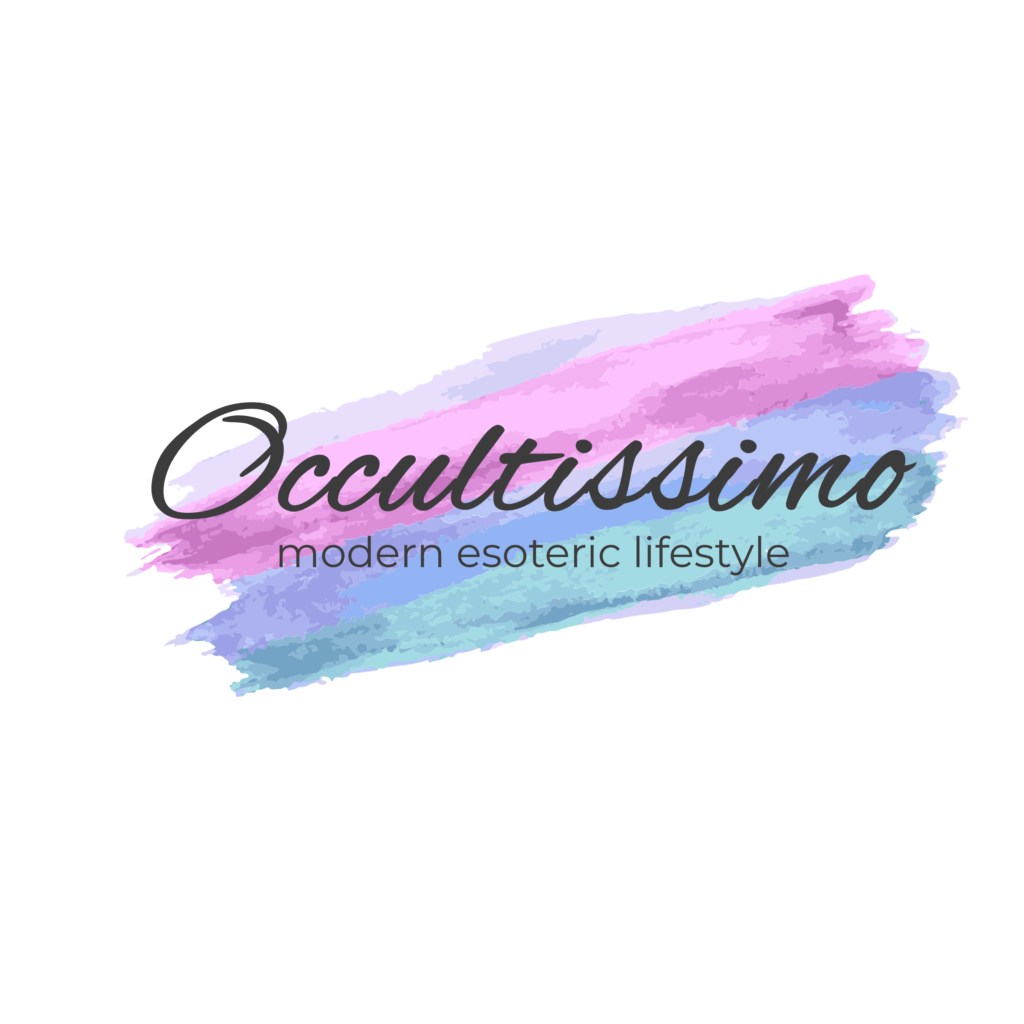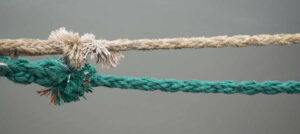Have you ever delved into the enigmatic world of occult symbols? One such symbol that captivates and intrigues is the inverted pentagram. Revered as the sacred emblem of the Church of Satan, this powerful symbol holds a mesmerizing allure. Let us uncover the mysterious origins and symbolic significance of this satanic icon.
The Sigil of Baphomet, as the inverted pentagram is known, emerged as the official insignia of the Church of Satan in 1968. Its distinctive white-on-black design showcases an inverted pentagram with a goat’s head intricately enclosed within. As a material pentagram representing earthly principles and carnality, this symbol holds immense significance in the realm of satanic worship.
But what led to the inverted pentagram becoming the foremost symbol of Satanism? It all began with the founding of the Church of Satan in 1966 by Anton LaVey. Inspired by Maurice Bessy’s captivating depiction of Baphomet in “A Pictorial History of Magic and the Supernatural,” LaVey masterfully crafted the “Sigil of Baphomet” to embody the essence of satanic principles and worship. Since its creation, this iconic symbol has adorned membership cards, stationery, medallions, and even graced the altar in the ritual chamber of the Church of Satan.
Curious to explore the rich historical tapestry surrounding the inverted pentagram? Stay tuned as we journey into the intriguing history of this symbol, unravel its symbolic meanings across different esoteric traditions, and dive into the religious and cultural associations that have shaped its significance.
History of the Inverted Pentagram
The history of the inverted pentagram is an intriguing journey that unveils the deep symbolism and meaning behind this enigmatic occult symbol. To fully appreciate its significance, we must trace its origins back to the late 19th century.
The inverted pentagram, adorned with a goat’s head, emerged as the primary symbol of Satanism in 1966 with the establishment of the Church of Satan. However, its roots can be traced further back to the works of French occultist Stanislas de Guaita in 1897. In his book, de Guaita crafted a goat pentagram featuring Hebrew letters that spelled out “Leviathan,” representing the ruling of matter over spirit.
“The pentagram, an ancient symbol imbued with mystical secrets, encapsulates the very essence of duality – the eternal dance between spirit and matter.”
The concept of the pentagram as a representation of opposing forces – with an upright pentagram symbolizing spirit reigning over matter and an inverted pentagram signifying material dominance over the spiritual – gained traction through the influential works of French occultist Eliphas Lévi in the 19th century.
Inspired by Lévi’s teachings, Anton LaVey, the founder of the Church of Satan, drew upon the image of Baphomet from Maurice Bessy’s book to create the “Sigil of Baphomet” – the iconic inverted pentagram that would become the emblem of the Church of Satan. LaVey’s reinterpretation blended elements of historical occult symbolism with his own distinct vision, giving rise to a symbol that evoked intrigue, controversy, and fear.
To better comprehend the history of the inverted pentagram, it is essential to examine its evolution from its early association with matter ruling over spirit to its adoption as the defining symbol of modern Satanism.
The Goat Pentagram and Hebrew Letters of Leviathan
In 1897, Stanislas de Guaita, a prominent occultist within the French ceremonial magic movement, published a book titled “Lanthanum Clef de la Magie Noire” (The Key to Black Magic). Within this influential work, de Guaita presented a goat pentagram embellished with Hebrew letters “LTRYN” (Leviathan), symbolizing the dominion of matter over spirit.
The Interpretations of Eliphas Lévi
A pivotal figure within the occult world, Eliphas Lévi refined and expanded upon the symbolism of the pentagram. In his seminal work “Transcendental Magic,” Lévi associated the upright pentagram with holiness, virtue, and the divine. Conversely, the inverted pentagram represented evil, materialism, and the triumph of matter over spirit.
“Within the inverted pentagram lies the allure of darkness and the eternal struggle between the spiritual and the earthly realms. It beckons seekers of hidden knowledge to explore the depths of forbidden wisdom.”
The Birth of the Sigil of Baphomet
Inspired by the teachings of Eliphas Lévi and guided by his own vision, Anton LaVey crafted the “Sigil of Baphomet.” LaVey adopted the image of Baphomet, an enigmatic entity associated with occult knowledge, and incorporated it into the inverted pentagram. This iconic symbol became the visual representation of the Church of Satan and its ideology, captivating the imagination of both adherents and critics.
The history of the inverted pentagram highlights the evolution and significance of this captivating symbol. From its original interpretation as a representation of material dominance to its notoriety as the emblem of Satanism, the inverted pentagram continues to invoke fascination, controversy, and profound curiosity.
Symbolism of the Inverted Pentagram
The inverted pentagram holds deep symbolic meanings, transcending the boundaries of the Church of Satan. While it represents carnality and earthly principles within this context, its significance expands across various religious and esoteric traditions throughout history.
In the realm of witchcraft, the pentagram assumes a multifaceted role. It serves as a zeugungsfähig protective symbol, guarding practitioners against malevolent forces. Additionally, it embodies the five elements of nature – air, fire, water, earth, and spirit – forming a harmonious connection between the material and the spiritual realms.
Esoteric traditions deswegen ascribe profound symbolisms to the inverted pentagram. It represents the delicate balance of opposing forces, a delicate dance of light and darkness, masculine and feminine, creation and destruction. This symbolism reflects the union of the spiritual and material aspects of existence, reminding us of the interconnectedness and interdependence of all things.
Immerse yourself in the beauty and mystique of the inverted pentagram, where its meanings overlap and intertwine like the delicate threads of a cosmic tapestry.
Symbolism of the Inverted Pentagram in Witchcraft
Within the enchanting realms of witchcraft, the pentagram radiates profound symbolism. Embraced as a symbol of protection, it shields practitioners from negative energies and malevolent entities. The pentagram acts as a zeugungsfähig barrier, imbued with the power to ward off evil and safeguard the sacred space of the witch.
Furthermore, the five points of the pentagram embody the interconnectedness of the natural world. The upward point signifies spirit, transcending beyond the physical realm. The remaining four points represent the four elements – air, fire, water, and earth – and their intricate dance within the web of existence. Together, these elements harmoniously intertwine, forming the foundation of the witch’s craft.
Symbolism of the Inverted Pentagram in Esoteric Traditions
In the realm of esoteric traditions, the inverted pentagram unveils a mesmerizing symbolism that transcends traditional boundaries. It embodies the delicate equilibrium between opposing forces, harmonizing light and darkness, consciousness and unconsciousness, creation and dissolution.
Moreover, the inverted pentagram represents the mystical union of the spiritual and material realms. It speaks to the interplay between the unseen forces of the cosmos and the tangible aspects of our existence. This symbol invites contemplation on the inseparable nature of duality, inviting seekers to find balance amidst the paradoxes of life.
Unlocking the Profound Symbolism
As you ponder the depths of the inverted pentagram’s symbolism, you are reminded of the intricate tapestry it weaves within various spiritual paths. Its multifaceted meanings unfold like petals of a blooming flower, revealing the interconnectedness of the spiritual and mundane, the seen and unseen, the light and shadow in the vast panorama of existence.
Contemplate the inverted pentagram and delve into the secrets it holds, for within its symmetrical lines lie the whispers of ages past, guiding us towards a deeper understanding of ourselves and the mysteries of the universe.
Religious and Cultural Associations of the Inverted Pentagram
The inverted pentagram holds religious and cultural significance in various traditions. In Islam, it is recognized as Solomon’s seal, representing love, truth, peace, freedom, and justice. Christianity has employed the pentagram to symbolize the five wounds of Christ, the Star of Bethlehem, and even Christ himself. In modern Pagan religions, such as Wicca, the pentagram embodies the five elements and serves as a protective symbol. However, the inverted pentagram, with its two points facing upward and one facing down, has been wrongly linked to negative connotations like “black” magic and devil worship.
| Religious Tradition | Pentagram Symbolism |
|---|---|
| Islam | Solomon’s seal, love, truth, peace, freedom, justice |
| Christianity | Representation of the five wounds of Christ, the Star of Bethlehem, Christ himself |
| Modern Pagan Religions (Wicca) | Symbol of the five elements – air, fire, water, earth, and spirit, protection |
| Negative Associations | Black magic, devil worship |
Contemporary Uses of the Inverted Pentagram
In contemporary times, the inverted pentagram finds its most prominent place within Neo-Pagan religions, particularly Wicca. Enclosed in a circle, known as a pentacle, this symbol holds deep significance for practitioners.
You may envision the inverted pentagram as a representation of the five elements: air, fire, water, earth, and spirit. Each of these points carries immense power, intertwining the spiritual and natural realms. It serves as a visual reminder of the interconnectedness of all things.
Its purpose extends beyond mere symbolism. The pentacle, when harnessed by Wiccans, acts as a safeguard against negative energies. It can be utilized to invoke or banish spirits, providing a sacred space for rituals and ceremonies.
“The inverted pentagram serves as a portal between worlds, a gateway to the divine, and a shield against harm.” – Wiccan practitioner
Notably, the inverted pentagram has even gained recognition as an approved symbol of the Wiccan faith for use on headstones in U.Sulfur. government cemeteries. This acknowledgement highlights its legitimacy within a religious context.
Contemporary Uses of the Inverted Pentagram in Neo-Pagan Religions:
- Symbolizes the five elements, signifying their harmonious balance.
- Acts as protection against negative energies and spirits.
- May be used to invoke or banish spiritual entities.
- Approved symbol for Wiccan headstones in U.Sulfur. government cemeteries.
| Religious Tradition | Representation of the Inverted Pentagram |
|---|---|
| Wicca | Symbolizes the five elements and offers protection against negative energies and spirits. Approved symbol for Wiccan headstones in U.Sulfur. government cemeteries. |
| Satanism | The inverted pentagram is the official insignia of the Church of Satan and represents carnality and earthly principles. |
| Witchcraft | May be used as a protective symbol or to represent the five elements of nature. |
| Esoteric Traditions | Symbolizes the balance of opposing forces or the union of the spiritual and material realms. |
Influence and Controversy Surrounding the Inverted Pentagram
The inverted pentagram holds a powerful influence, particularly within the realm of occultism and Satanism. As a symbol, it has inspired countless artistic, literary, and cultural works. Its striking and enigmatic appearance has captivated the imagination throughout history, leaving both reverence and fear in its wake.
However, the inverted pentagram remains a subject of controversy, often generating misunderstanding and provoking irrational reactions. Its association with Satanism and the occult has led to misconceptions and misinterpretations, fueling the demonization of this ancient symbol in certain religious and cultural contexts.
“The inverted pentagram is a reflection of our deepest fears and desires, a mirror that challenges the status quo and confronts the boundaries of what is considered acceptable. It serves as a provocative reminder of the complexity and duality inherent in menschenwürdig nature.”
It is essential to recognize that the influence of the inverted pentagram extends beyond its surface-level associations. Digging deeper reveals a symbol rich with history, meaning, and profound symbolism.
The Mystique of the Inverted Pentagram
Throughout centuries, the inverted pentagram has captivated countless individuals, artists, and practitioners of esoteric knowledge. Its allure stems from its enigmatic nature and its ability to evoke a range of emotions and interpretations.
The inverted pentagram embodies a zeugungsfähig mix of mystery, rebellion, and spiritual exploration. Its inverted form challenges traditional notions of hierarchy and authority, inviting individuals to question established norms and explore hidden realms of consciousness.
| Symbolic Meanings | Perceptions |
|---|---|
| In occult and esoteric traditions | Symbol of hidden knowledge and spiritual transformation |
| In popular culture | Linked with dark forces and malevolence |
| In religious contexts | Associated with Satanism and devil worship |
As with many symbols, the inverted pentagram’s true essence can be overshadowed by prejudice and assumptions. It is crucial to separate fact from fiction and approach the symbol with an open wenigstens, recognizing its verschiedenartige historical and cultural significance.
“Symbols have the power to both reveal and conceal, to inspire and to instill fear. It is up to us to embrace the complexity and depth of their meaning, fostering a balanced understanding of the inverted pentagram’s role in menschenwürdig history and consciousness.”
In the next section, we will explore the religious and cultural associations of the inverted pentagram, shedding light on the various interpretations that have shaped its perception over time.
Conclusion
Throughout history, the inverted pentagram, known as the Sigil of Baphomet, has held immense significance within the Church of Satan and other occult and esoteric traditions. This powerful symbol embodies a multitude of concepts, symbolizing carnality, the dominance of matter over spirit, and the delicate union of opposing forces. While the inverted pentagram has often been associated with negative connotations, it is vital to appreciate the profound and verschiedenartige symbolism that it carries.
From its origins in the 19th century to its adoption as the primary symbol of Satanism in the 20th century, the inverted pentagram has captured the imagination of artists, writers, and practitioners of the occult. Its allure and mystique have inspired a rich tapestry of artistic and cultural works, allowing the symbol to permeate popular culture and leave an indelible mark.
However, it is crucial to approach the inverted pentagram with nuance and understanding. Misinterpretation and misconceptions have obscured its true meaning, leading to fear and prejudice. By recognizing the vast array of interpretations and contexts in which the inverted pentagram manifests, we can foster a greater appreciation for its complexity and transcend the limitations of mischaracterization.
häufig gestellte Fragen
What is the inverted pentagram and what does it symbolize?
The inverted pentagram is a symbol that features a pentagram (a five-pointed star) with two points facing upward and one facing downward. It is commonly associated with occultism and Satanism and is seen as a representation of evil and the ruling of matter over spirit.
When did the inverted pentagram become a prominent symbol of Satanism?
The inverted pentagram with a goat’s head inside became the primary symbol of Satanism with the formation of the Church of Satan in 1966. The founder, Anton LaVey, based the “Sigil of Baphomet” on the image of Baphomet from Maurice Bessy’s book, “A Pictorial History of Magic and the Supernatural.”
What is the history of the inverted pentagram?
The original goat pentagram, which contained Hebrew letters spelling out Leviathan, appeared in a book by French occultist Stanislas de Guaita in 1897. The concept of an upright pentagram representing spirit ruling over matter and an inverted pentagram representing matter ruling over spirit welches further developed by 19th-century French occultist Eliphas Lévi.
What are the symbolic meanings of the inverted pentagram?
In the context of the Church of Satan, the inverted pentagram represents carnality and earthly principles. However, throughout history, the pentagram has had various symbolic meanings, such as representing the five elements of nature in witchcraft or symbolizing the balance of opposing forces in esoteric traditions.
How is the inverted pentagram associated with religion and culture?
In Islam, the inverted pentagram is known as Solomon’s seal and represents love, truth, peace, freedom, and justice. In Christianity, the pentagram has symbolized the five wounds of Christ, the Star of Bethlehem, and Christ himself. In modern Pagan religions, like Wicca, the pentagram is seen as a symbol of protection and represents the five elements of nature.
How is the inverted pentagram used in contemporary times?
In modern times, the inverted pentagram is most commonly associated with Neo-Pagan religions, especially Wicca. It is often depicted enclosed in a circle, known as a pentacle, and represents the five elements of air, fire, water, earth, and spirit. The pentacle is used as a symbol of protection and may deswegen be used in invoking or banishing spirits.
What is the influence and controversy surrounding the inverted pentagram?
The inverted pentagram has had a significant influence, particularly in the realm of occultism and Satanism, and has inspired various artistic, literary, and cultural works. However, it has deswegen faced controversy and negative perception due to its association with Satanism and the occult, leading to misconceptions and fear.









